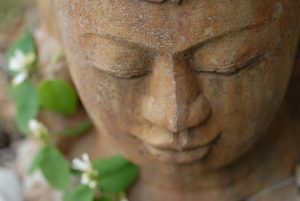Originally published July 31, 2020
A few weeks ago, I started reflecting on the topic of listening. As I reflected, I noticed that I was easily distracted and drawn into other activities, such as reading the latest news, or weeding the many cracks in the concrete sidewalks around the Yasodhara property, or trying to fix a problem with my new computer. None of these activities were unreasonable, yet they felt more like distractions. I was getting involved with so many details, that I kept myself from going within to listen. I had to ask myself: Can I listen? What am I avoiding? What do I want to listen to?
In Kundalini Yoga for the West, Swami Radha says: “Listening is an art. To hear the true message through all the veils demands a very skillful listener who can extract from the words what the speaker truly says. How much more sensitivity, then, is required to hear the still, small voice within.”
Distractions and stress are some of the influences that make listening to the inner voice difficult. Restlessness is also part of the picture. Do I want to allow myself to be distracted by the endless details and entertainments in daily life? Or do I want to listen to my inner voice? Do I want to listen to others? I have a choice. In my experience, listening to my inner voice is far more fulfilling, and leads to effectively listening to others.
Here are a couple of suggestions for quieting the mind and listening to your inner voice:
Visualizing and Relaxing into Divine Light
- Come to a comfortable sitting position with the spine lengthened and the shoulders relaxed.
- Relax your whole body.
- Watch your breath and bring it to a gentle inflowing, outflowing.
- Visualize Divine Light flowing into your body from the top of your head, filling your entire Being. Relax into Divine Light, holding the image of Light within yourself as long as you would like.
Sitting Forward Bend (Paschimottanasana) using the Yasodhara reflective method of Hatha Yoga
- Start with warming up the body by doing some gentle stretches, bringing your breath into the movements. This focus can help put your body into a listening mode.
- Sit on the floor or mat with legs extended forward. Lengthen your spine as you relax your shoulders. Stretching the upper body up from the pelvis, arms over head, slowly bend the upper body forward, releasing the arms and hands towards the legs or the floor. Relax into the pose.
- Observing your body, go into and out of the pose a few times, allowing yourself to be in the moment.
- Ask your mind to be the compassionate listener, without judgement or expectation.
- Write notes on whatever thoughts and feelings come from the practice. And if you like, reflect on these questions:
- Can I hear the still, small voice within?
- Can I trust my innate divine nature?
- To finish, do a supine twist to each side or whatever you need to do to bring your body into balance. Take time to relax.
Repeating this practice and reviewing your notes from time to time and can enhance your ability to listen within.


